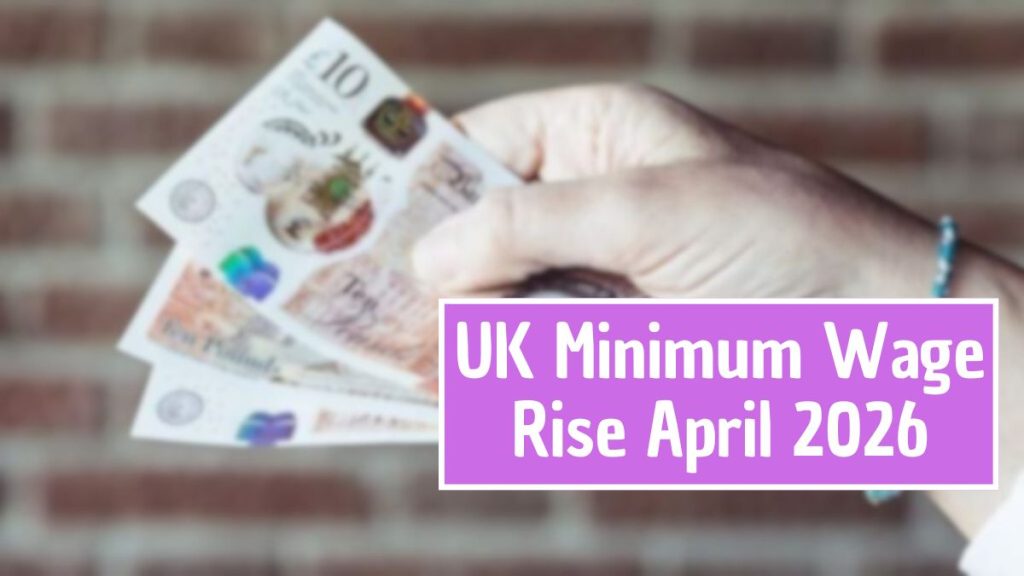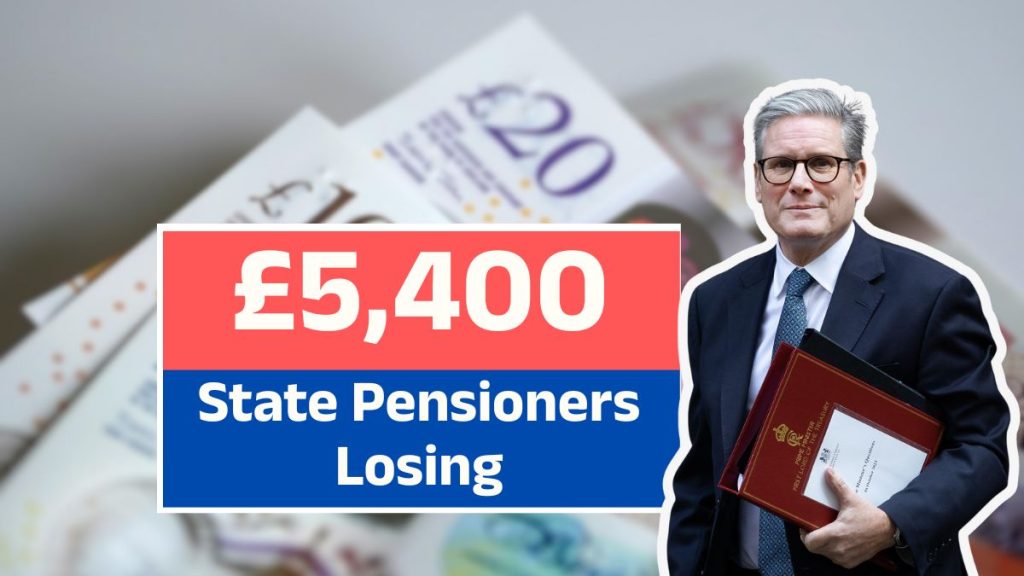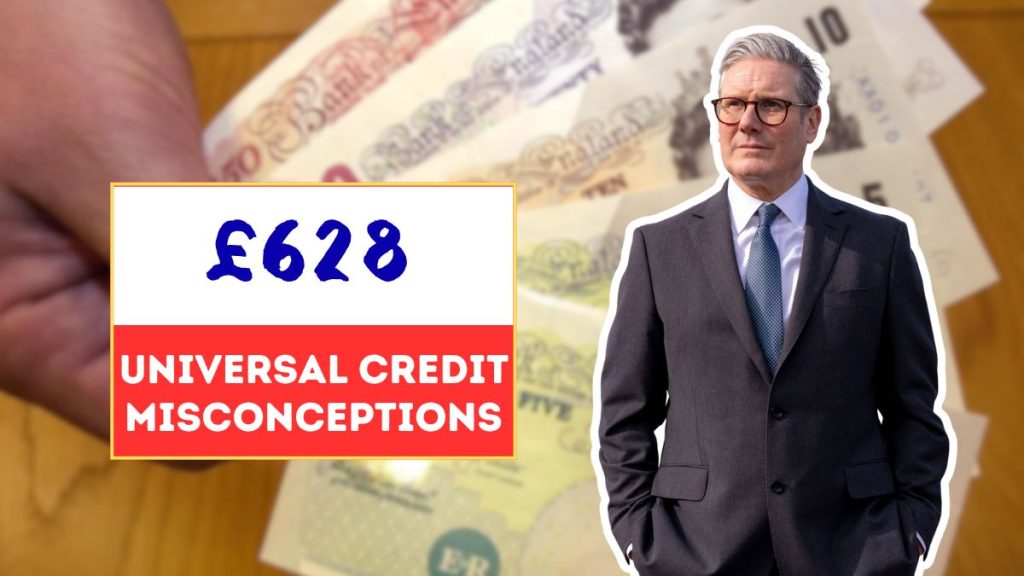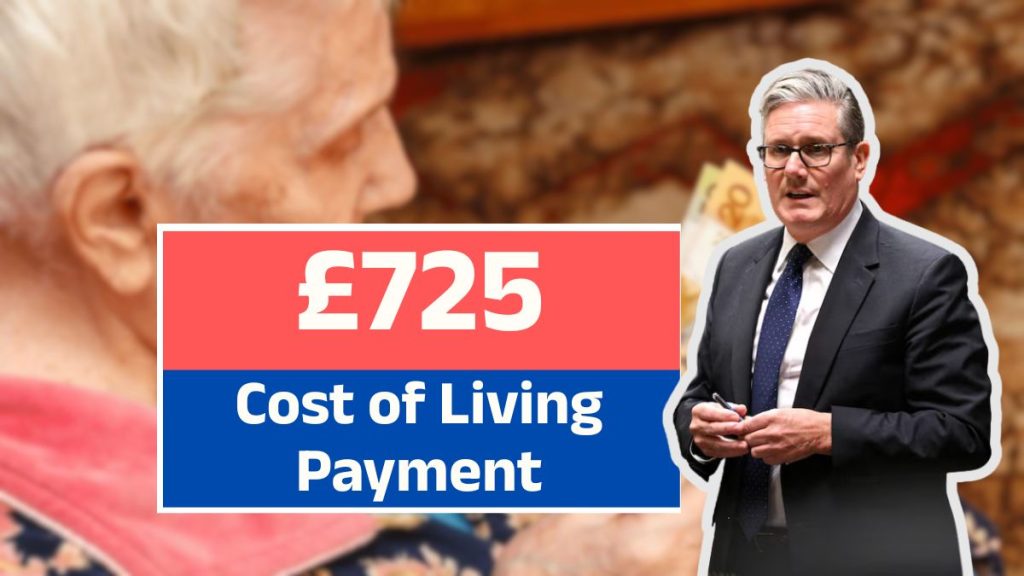For several years, the government relied on one-off cost of living payments to cushion families from soaring bills. That emergency model is now giving way to a more structural approach: permanently lifting the Universal Credit (UC) standard allowance so that households receive a steady, predictable uplift baked into monthly awards rather than sporadic top-ups. It is a shift from crisis-response thinking to systemic reform, intended to deliver long-term security and clearer budgeting.
Where the £725 Figure Comes From (And Why It’s Not a Cheque)

The headline number — £725 — is not a lump sum that lands in your account in one go. It is an estimated annual cash increase in the UC standard allowance for a single adult over 25 by the 2029/30 tax year under the new legislation. The uplift is phased in, rising year by year and outpacing inflation so that the real value of support increases, not merely keeps up with prices. By 2029/30, the standard allowance is projected to be about £250 higher than it would have been with inflation-only uprating.
The Universal Credit Bill (The Legal Engine Behind the Reform)
At the core of this change is the Universal Credit Bill, a flagship measure within the government’s broader “Plan for Change.” The bill seeks to correct a “fundamental imbalance” in the welfare system — specifically, the tension between income support and the incentives to work. By permanently boosting the main UC rate above inflation, ministers aim to raise living standards while encouraging employment, signalling a long horizon for the policy rather than a short burst of aid.
The Biggest Real-Terms Boost Since 1980 (Why This Moment Matters)
Independent analysts have described the reform as the largest permanent real-terms increase to out-of-work support in over four decades. That benchmark is significant: in the past, benefits tended to shadow inflation with little scope for a meaningful real uplift. This time, the baseline is being deliberately moved up, providing a sturdier floor for low-income households and a clearer path to financial stability.
Who Stands to Benefit (The Scale of the Change)
The government estimates nearly 4 million households on Universal Credit will benefit from the rising standard allowance. The policy is universal within UC — it does not require a separate application or an additional form. If you receive UC, the uplift flows through automatically as the core rate increases across the coming years.
Not Just Numbers (Security for Vulnerable Claimants)
The legislation goes beyond the generic uplift to include safeguards for people with severe health conditions. Around 200,000 individuals with lifelong conditions and no work requirement will be exempt from reassessments. In addition, those on the UC health element — and new claimants covered by Special Rules for End of Life (12 months or less) — will see their combined payments protected, rising with or above inflation from 2026/27 through 2029/30. The goal is to shield the most vulnerable from income erosion.
The “Right to Try” Guarantee (Work Without Losing Your Safety Net)
A major barrier for disabled people and those with health conditions has been the fear that trying a job could jeopardise benefits if work doesn’t stick. The bill addresses this with a new, legally protected “Right to Try” Guarantee. It gives claimants confidence to take up work without triggering immediate reassessment if the role proves unsustainable. The policy sits within a £3.8bn “Pathways to Work” package, funding tailored skills support, job coaching, and adjustments that help people enter, test, and maintain employment.
Rebalancing UC (More Weight on the Core Allowance)
Technically, the reform rebalances UC by strengthening the standard allowance while retuning the health top-up for new claims to £50 a week from April 2026. Crucially, existing recipients of the UC health element keep their higher rate; the cut-over applies to new claims except where severe conditions or end-of-life rules apply. The idea is to build a robust, universal base of support for all UC claimants while ensuring targeted help remains focused and sustainable.
A Multi-Year Rollout (What to Expect on Your Statement)
You will not see “£725” once and done. Instead, you should see a gradual rise in your monthly UC award as each year’s uplift is implemented. Statements will show the updated standard allowance, and the cumulative effect over several years is what produces the headline annual figure. In practice, that means more money each month, a smoother budgeting experience, and less reliance on emergency grants.
Why Not Another One-Off? (Lessons From the Energy Shock)
One-off payments helped during the energy price spike, but they made household cashflow volatile and hard to plan. By moving the uplift into the core benefit, the government aims to reduce income whiplash, stabilise monthly budgets, and restore confidence in long-term planning for rent, debt repayments, food, and transport.
How This Interacts With Work (Incentives and Take-Home Pay)
By raising the core UC rate, the policy narrows the gap between benefit income and low wages — but that comes with careful design to maintain work incentives. The earnings taper and work allowances remain pivotal: they determine how much of each additional pound of earnings a claimant gets to keep. Expect continued emphasis on in-work progression, skills, and hours growth alongside the uplift.
Regional and Family Differences (Who Feels It Most)
The uplift flows through the standard allowance, so the impact will vary by household type (single, couple, with/without children), housing costs, and work patterns. Households in high-rent areas or with variable hours may feel the stabilising effect most, because a larger base payment helps smooth income when hours fluctuate.
Timelines and Parliamentary Path (Where the Bill Is Now)
The bill has passed the House of Commons and is under scrutiny in the House of Lords. Once it receives Royal Assent, the phased uprating timetable guides each year’s increase. The £725 annual uplift is a projection for 2029/30, assuming the above-inflation trajectory holds as stated.
What You Should Do Now (Practical Steps for Claimants)
- Check your UC online journal regularly to track award changes.
- Update circumstances promptly (work hours, rent, childcare) to ensure accurate payments.
- Review budgeting with a focus on debt reduction and emergency savings as monthly amounts rise.
- Explore work pathways under the Right to Try — especially if you’ve hesitated for fear of reassessment.
- Seek advice from Jobcentre Plus or independent money guidance if your income is complex.
Protections Against Inflation (Keeping Real Value Intact)
One of the policy’s headline promises is that the core rate rises ahead of inflation, so households gain real purchasing power rather than merely treading water. For groups with protected status (severe conditions, end-of-life cases), combined payments will rise with or above inflation throughout 2026/27–2029/30.
The Size of the Prize (Why a Structural Uplift Matters)
A permanent uplift changes the baseline for millions. It affects eligibility for passported help (like certain local authority schemes), reshapes debt affordability, and, over time, can lift households out of acute hardship. Unlike one-offs, it is predictable, enabling better decisions on housing, work, and childcare.
Employers and Local Economies (Spillover Effects)
As UC standard allowances rise, claimants may feel safer to take hours or accept trial roles, thanks to the Right to Try. That could widen the candidate pool for employers, especially in sectors struggling to hire. Local economies may also benefit as steady income tends to translate into stable spending at nearby shops and services.
How the Health Element Changes Work in Practice (Case Scenarios)
- Existing claimant with a long-term condition: Keeps the current higher health element; uplift arrives via the standard allowance and inflation protections.
- New claimant, moderate condition, post-April 2026: Receives the £50/week health top-up plus the rising standard allowance; may also access Right to Try and Pathways to Work support.
- End-of-life claimant: Protected under Special Rules, with enhanced certainty and uprating.
Avoiding Common Misunderstandings (Myths vs. Facts)
- Myth: “I’ll get a £725 cheque in 2025.”
Fact: It’s a phased annual uplift in UC by 2029/30, built into your monthly award. - Myth: “The health element is being cut for everyone.”
Fact: Existing recipients keep their higher rate; new claims get £50/week unless under severe or end-of-life rules. - Myth: “Trying work will stop my benefits.”
Fact: The Right to Try aims to prevent punitive reassessment if a trial job doesn’t last.
Budgeting for the Uplift (Making the Increase Work Harder)
As your award rises, consider a 50/30/20 framework — 50% essentials (rent, utilities, food), 30% flexible (transport, clothing, school costs), 20% future (debt repayments, emergency fund). Even small, regular savings can build resilience against sudden expenses.
Interactions With Council Support (Don’t Miss Local Help)
Check your local council for discretionary support, hardship funds, or energy help. A higher UC base doesn’t preclude access to targeted local grants, especially where vulnerability is documented.
Looking Ahead to 2029/30 (What Success Looks Like)
If the policy delivers as designed, by 2029/30 the standard allowance will be materially higher in real terms, the health element will be better targeted, and more claimants will have tested or progressed in work without fear of losing their safety net. The system should feel simpler, steadier, and fairer.
What If Parliament Changes Course? (Contingencies and Review)
All legislation is subject to parliamentary oversight and future budgets. However, because this uplift is embedded in the core UC architecture, reversing it would require fresh legislation. Claimants should still plan around the phased timetable now in train, while staying alert to official updates.
Key Takeaway (Why This Reform Is Different)
This isn’t another temporary fix. It is a structural reset that moves crucial support into the monthly baseline, reduces uncertainty, and raises living standards in a way that households can plan around — precisely what the benefits system has often struggled to deliver.
FAQs
1) Is the £725 Cost of Living Payment a one-off grant?
No. The £725 is an estimated annual increase in the UC standard allowance by 2029/30 for a single adult over 25. It arrives gradually via monthly payments — not as a single cheque.
2) Do I need to apply to get this increase?
No. If you receive Universal Credit, the uplift is built into your UC award. It will appear on your monthly statement as the standard allowance rises over time.
3) What happens to people with severe or lifelong health conditions?
About 200,000 people with severe, lifelong conditions and no work requirement will be exempt from reassessments. Those on the UC health element (and eligible new claimants under Special Rules for End of Life) have protected payments that rise with or above inflation from 2026/27–2029/30.
4) What is the “Right to Try” Guarantee?
It is a new legal protection allowing disabled people and those with health conditions to attempt work without triggering immediate benefit reassessment if the job doesn’t last. It’s part of a £3.8bn Pathways to Work package for tailored support.
5) Will everyone see the same increase?
No. The uplift flows through the standard allowance, so the exact gain varies by household type, housing costs, earnings, and work allowances. The £725 is a projected example for a single adult over 25 by 2029/30.














